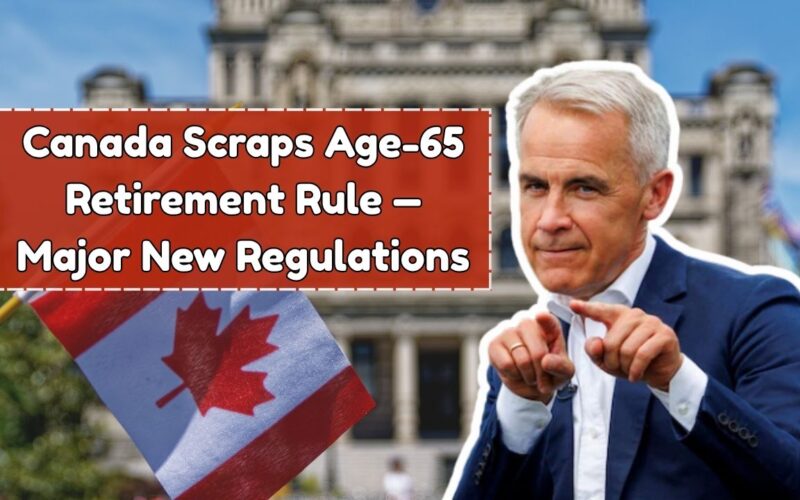Canada is entering a historic new chapter in how retirement works.
Beginning November 10, 2025, the country will officially eliminate the fixed retirement age of 65, replacing it with a fully flexible retirement system that gives Canadians the power to decide when they want to stop working.
This major reform reshapes how CPP (Canada Pension Plan) and OAS (Old Age Security) benefits are accessed, how they grow, and how people plan their long-term financial future.
With life expectancy rising and work patterns changing, the government aims to modernize retirement so it reflects the realities of today—not the past.
No More Mandatory Retirement at 65
Retirement at 65 has been a cultural norm for decades, but starting November 2025, it will no longer define when Canadians must leave the workforce or begin taking benefits. Instead, individuals can choose when to retire based on:
- Financial readiness
- Health conditions
- Employment situation
- Lifestyle goals
You can retire earlier if needed—benefits will simply be reduced.
You can retire later to increase monthly payouts.
This brings fairness and flexibility, ensuring retirement is a personal choice rather than a one-age-fits-all rule.
How CPP and OAS Will Change
The new system affects how benefits grow and when they start.
CPP (Canada Pension Plan)
- Accessing CPP before 65 reduces benefits monthly.
- Accessing CPP after 65 increases payments, rewarding delayed retirement.
- Your contributions and chosen retirement timing determine your exact payout.
OAS (Old Age Security)
- Previously locked at age 65 only.
- Under the new rules, OAS can be taken early or deferred for a higher amount.
- Seniors who continue working can combine wages with delayed OAS to boost income security.
Why the Government Made This Change
The shift to a flexible retirement age responds to major economic and demographic trends:
- Canadians are living longer, often into their mid-80s or beyond.
- Many prefer part-time or flexible work after age 65.
- A single fixed retirement age no longer fits the modern lifestyle.
- The old model placed pressure on pension sustainability.
By reforming retirement rules, the government aims to encourage longer workforce participation while giving Canadians complete control over their retirement timing.
Additional Financial Support: Canada Disability Benefit
Alongside retirement changes, a one-time $150 payment will be delivered to eligible low-income Canadians living with disabilities. This payment is intended to help offset rising living expenses, healthcare costs and support services.
This relief amount will be deposited automatically once rollout begins, without requiring re-application.
What Canadians Can Expect Starting November 2025
Beginning November 10, 2025:
- Retirement becomes fully flexible
- CPP and OAS become more customizable
- Canadians can earn more by working longer
- Early retirement remains an option for those who need it
- Financial planning tools from the government will help citizens calculate optimal retirement timing
This new model gives Canadians freedom, financial autonomy and long-term stability.
Canada’s decision to scrap the traditional retirement age of 65 marks the biggest transformation in senior policy in decades.
As of November 2025, Canadians gain the freedom to shape their retirement based on personal needs—not a one-size-fits-all rule.
With flexible CPP and OAS timing, additional incentives for working longer, and new disability support measures, Canadians will enjoy a more modern, personalized, and financially stable retirement future.
FAQs
There will no longer be a fixed retirement age. Canadians can choose when they want to retire.
Yes. Deferring benefits will raise your monthly payments, rewarding those who continue working longer.
Absolutely. You may retire early, but your CPP and OAS payments will be lower compared to waiting.




